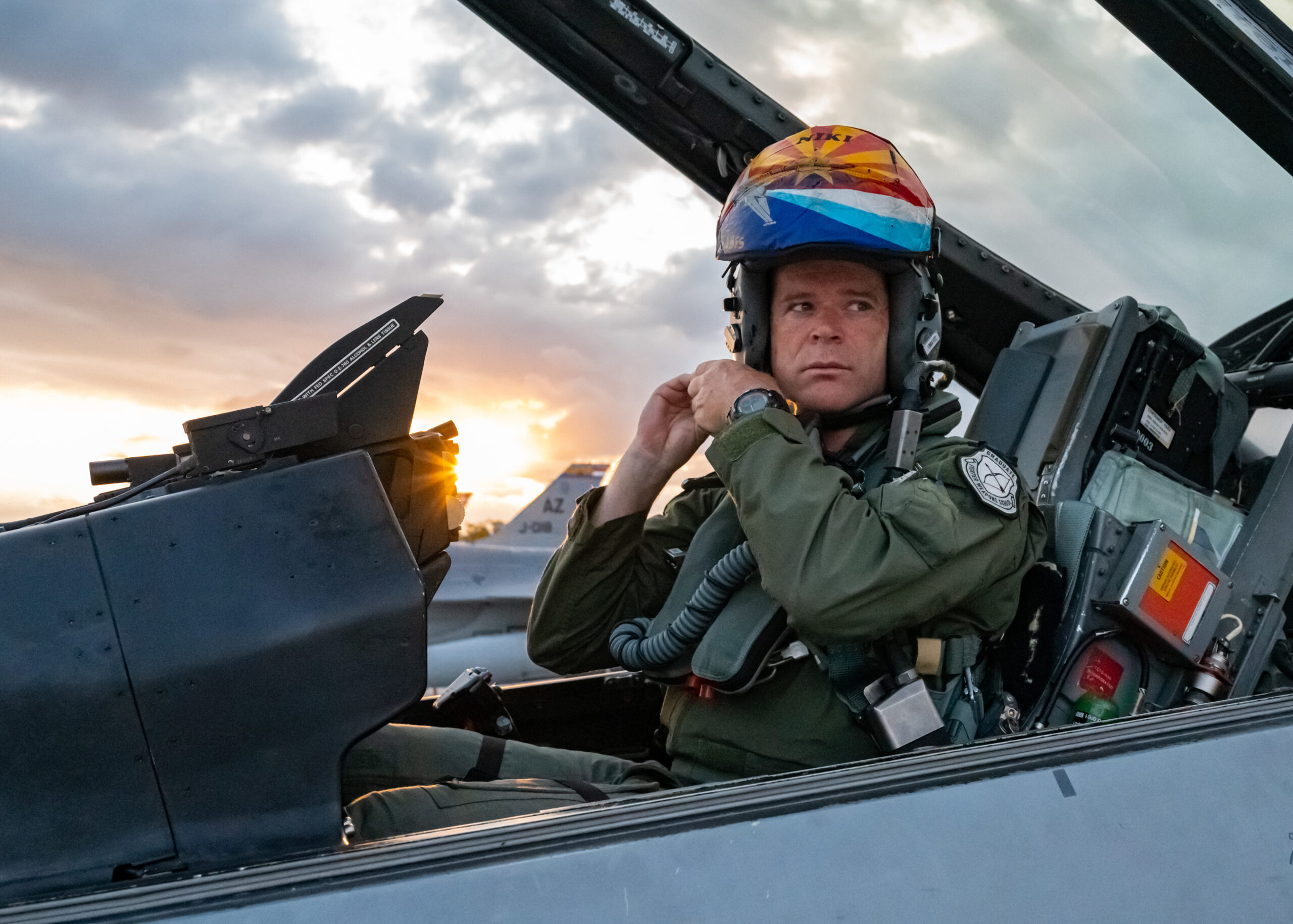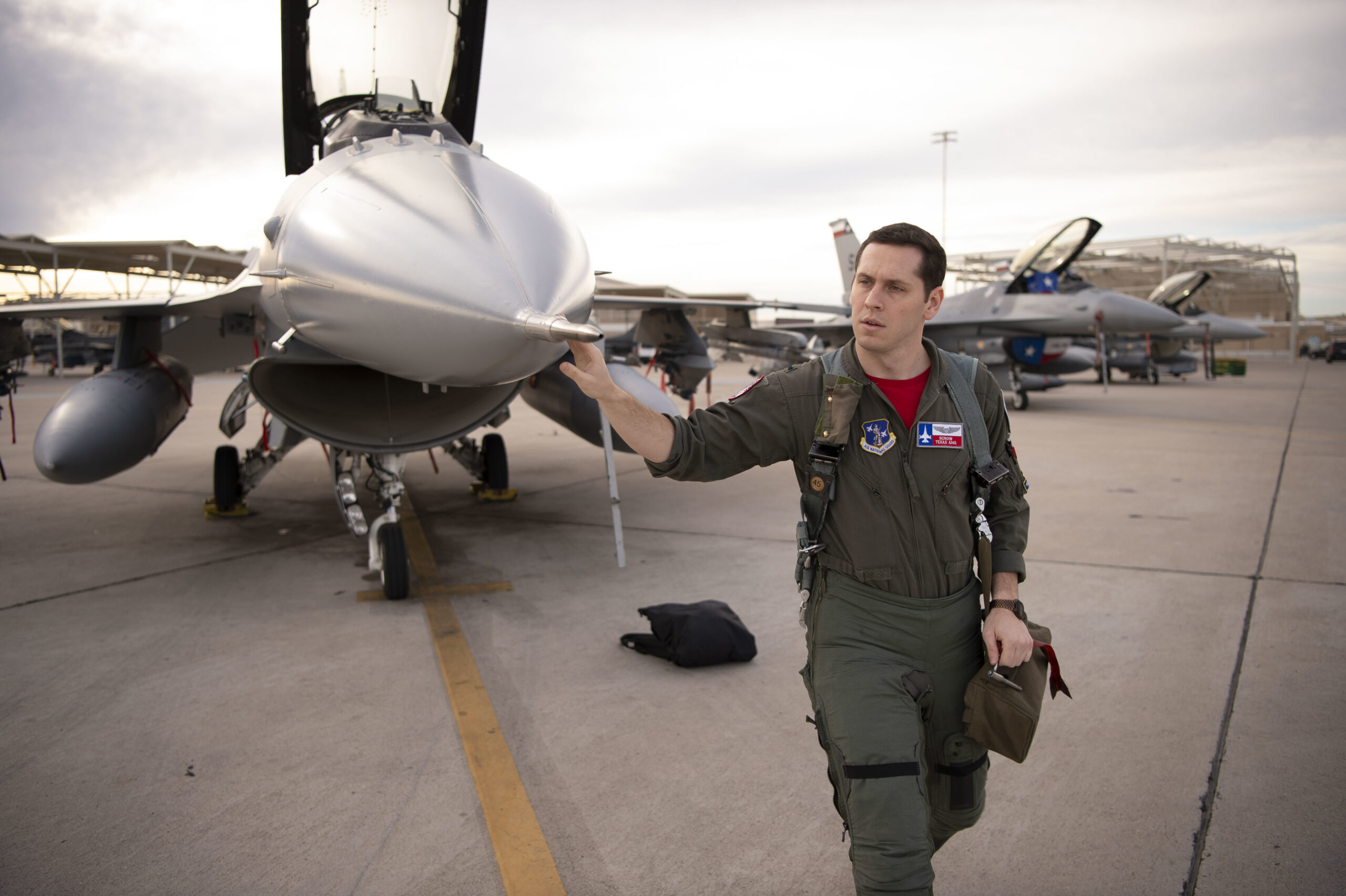The U.S. House of Representatives has passed its version of the 2023 National Defense Authorization Act, which, most notably, calls for funding to start training Ukrainian pilots on American fighter jets. The amendment follows repeated calls from Ukrainian officials and pilots for new aircraft, such as F-16s, with which to continue their efforts to repulse the Russian invasion.
So far, the U.S. government has been reluctant to provide Ukraine with fighters, and plans to transfer examples of Soviet-era jets from other NATO allies have also failed to materialize, except for weapons and spares.

However, should the amendment become law, that could open the way for Ukrainian Air Force pilots to start training on U.S.-owned jets, which would, in turn, be a prerequisite for Kyiv receiving American-made fighters, from whatever source. The War Zone, too, has in the past made the case for spinning up a training program for Ukrainian personnel as soon as possible, as you can read more about here and here. Bearing in mind the fact that it may very likely take a while longer to secure the aircraft themselves, it clearly makes sense to get a training pipeline set up in advance of potential future deliveries.
The amendment, which authorizes $100 million to train Ukrainian pilots and ground crews to become familiarized with U.S. aircraft, was put forward by Congressman Adam Kinzinger, a Republican representative for Illinois and a former Air Force pilot himself. It was part of the House of Representatives version of the 2023 National Defense Authorization Act that was passed last night, July 14.
In a tweet today, Kinzinger said: “Last night the House passed my bipartisan Ukrainian Fighter Pilots Act, which authorizes the training of Ukrainian fighter pilots in the U.S. I urge the Senate to get this critical legislation to the President’s desk. Slava Ukraini!”
Together with Congresswoman Chrissy Houlahan, a Democrat representative for Pennsylvania and also a former Air Force officer, Kinzinger introduced this legislation last month, to allow Ukrainian personnel to start training “on F-15s, F-16s, and other air platforms while the Administration continues to consider sending such equipment.”
There is no indication where that training might take place, but the U.S. already has bilateral training partnerships established with various different foreign F-15 and F-16 operators with relevant ‘schoolhouses’ that are resident at different American airbases. Another option could be to embed Ukrainian pilots within F-16 units of other NATO members, provided they have the capacity and sufficient instructors.

In a joint statement, Houlahan and Kinzinger said: “The Representatives remain hopeful that there won’t be a need for further escalation [in Ukraine], but they both agree that it’s critical for the Ukrainian military to be trained and familiar with these air platforms should Russia continue their malign campaign against Ukraine’s sovereignty. Regardless of whether the United States and its allies deploy such equipment, this program will strengthen the Ukrainian military and ensure their long-term stability and security.”
Houlahan and Kinzinger also pointed to extensive accounts that suggest Russia is still yet to achieve air superiority, in the face of stiff opposition from the Ukrainian Air Force and Ukrainian ground-based air defenses. “The United States can help Ukraine change the situation in the air domain, giving Ukrainian forces a decisive advantage in the war,” the representatives added.
The latest development in the campaign to get U.S.-made fighter jets into Ukrainian hands comes only days after a visit to Washington, D.C., by Ukrainian Air Force pilots, callsigns “Juice” and “Moonfish.” The first of these previously gave an extensive interview to The War Zone about the air war in the ongoing conflict, which you can read here.
A video from the cockpit of a fully armed MiG-29, currently the primary air defense fighter in the Ukrainian Air Force:

Speaking on Capitol Hill and at the Pentagon, the two Ukrainian MiG-29 Fulcrum pilots described the challenges they faced flying this Cold War-era equipment against far more modern Russian fighters. Again, they called upon the U.S. government to help them get F-16s and related training.
Meanwhile, another Ukrainian MiG-29 pilot, callsign “Nomad,” told Air Force Magazine that their sorties were essentially “suicide missions.” He added that the capability gap between Ukrainian and Russian jets included the enemy’s availability of advanced active radar beyond-visual-range missiles, with a range of “more than 80 miles,” a point that Ukrainian pilots have raised in the past.
Russian Aerospace Forces Su-35S fighters take part in the Ukrainian invasion:

Currently, Nomad is the only Ukrainian Air Force pilot training in the United States, as part of an Air Force leadership program at Columbus Air Force Base, Mississippi. This began before Russia’s invasion of Ukraine in February, but he’s now hopeful that he could be among the initial cadre to train to fly F-16s.
Other potential candidates for training on U.S. jets would likely come from a group of “at least 30 pilots” who are judged to already have sufficient English-language skills for the syllabus. That’s the opinion of Col. Yuri Ignat, chief spokesperson for the Ukrainian Air Force Command, who also spoke to Air Force Magazine.
Ignat added that it would likely take around six months for pilots to convert to new fighters, with the bulk of this being related to tactics and the use of new weapons. The official also spoke of his belief that two 12-aircraft squadrons of F-16s, plus reserves, would be sufficient to help turn the tables against the Russian Aerospace Forces.
This is a less ambitious timeline than some of those set out in the past. The Ukrainian Air Force has previously said its pilots could be trained to operate F-15s or F-16s within two to three weeks. Juice, meanwhile, told The War Zone that he and his colleagues could learn to fly F-16s within “a few days.” After that, tactical and weapons training might only take “a few weeks.”
As we have examined in the past, the U.S. Air Force normally allocates six-plus weeks for its transition course, which takes a fully trained and experienced Air Force fighter pilot and transitions them just to fly the F-16 from another type. A normal B Course student will take at least 37 weeks for training on the F-16. Usually transitioning a foreign air arm to the F-16 takes many months, if not years, to accomplish and that isn’t during a full-out war at home.
As well as defending against Russian aircraft, Ukraine has expressed its desire to also operate new fighters in the suppression of enemy air defenses, or SEAD, role. This is considered necessary to erode Russian ground-based air defenses but is a complex discipline that would require additional equipment and training to be executed properly. The call for the F-16’s specific SEAD capabilities was made by the two Ukrainian MiG-29 pilots on their U.S. visit.

More recently, there have been unconfirmed reports that Ukraine may actually favor F-15s or F/A-18 Hornets over the often-mentioned F-16s. This is apparently due to concerns over the safety of a single-engine jet like the Viper, with a twin-engine platform being judged more suitable for rough-field operations and better able to absorb combat damage.
Once again, the new legislation could finally make it possible for Ukraine to obtain fighter jets, for air defense and possibly offensive duties, plus the required training for personnel. As recently as July 8, a senior defense official said that “there are no current plans to train Ukraine on any air platform other than those that they are using every day effectively in the battle right now.”
The effort to change that reality has been spearheaded by Houlahan and Kinzinger, who were among a dozen or so representatives and senators who met MiG-29 pilots Juice and Moonfish during their stateside visit. The Ukrainian pilots also reportedly had discussions with Nathaniel Adler, Principal Director for Russia, Ukraine, and Eurasia Policy at the Pentagon, as well as representatives of the Joint Chiefs of Staff.
So far, efforts to provide the Ukrainian Air Force with replacement fighter jets of a similar vintage to its MiG-29s and Su-27s have failed, while the air arm and its pilots have repeatedly campaigned for the more capable U.S.-made fighters that they believe can tip the balance against Russian airpower. As the war continues, moreover, and the nature of the conflict changes, the possibility of a bifurcated Ukraine becomes more likely, with a significant area of occupied Russian territory in the east of the country. In this kind of scenario, advanced fighter jets would be invaluable to support efforts by troops to claw back Ukrainian territory.
The U.S. House of Representatives’ version of the 2023 National Defense Authorization Act could be the kickstart needed to realize these aims. First, however, the Senate must pass its version of the bill, ahead of a compromise bill from the two chambers proceeds to President Joe Biden to be signed into law. That’s a process that could take several months. We will continue to watch this amendment’s progress with interest.
Contact the author: thomas@thedrive.com
